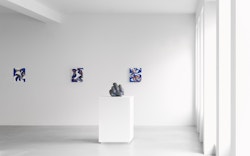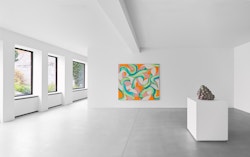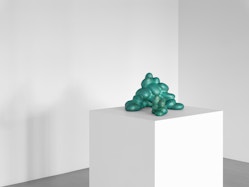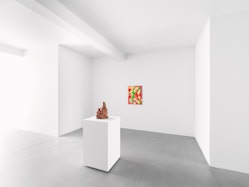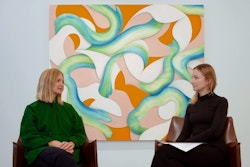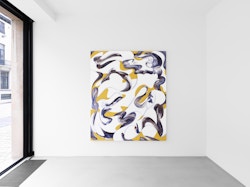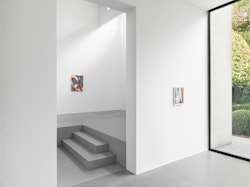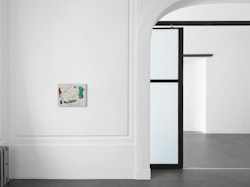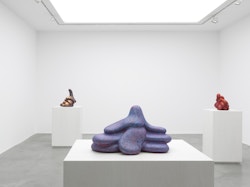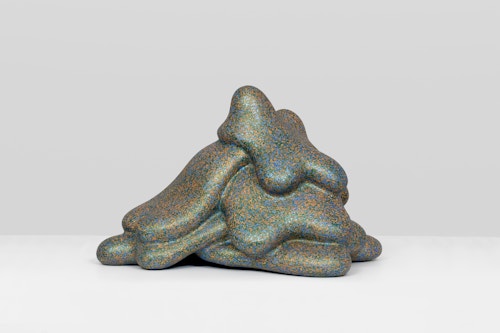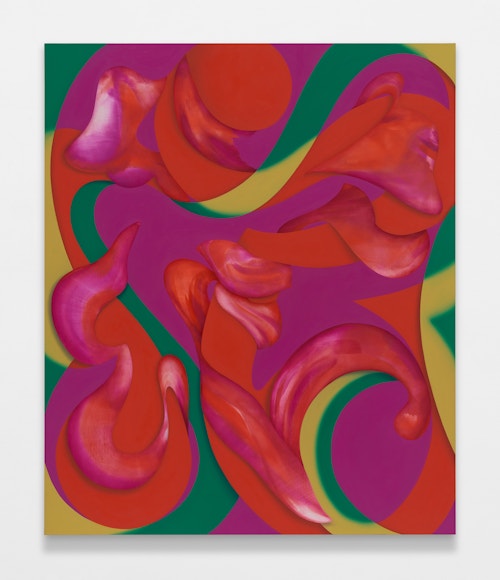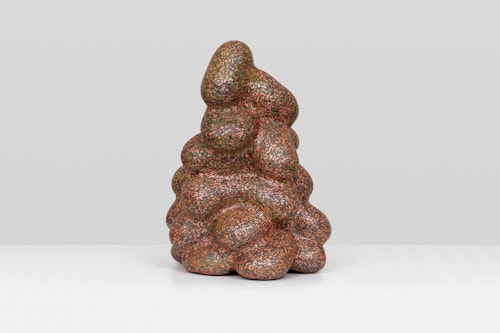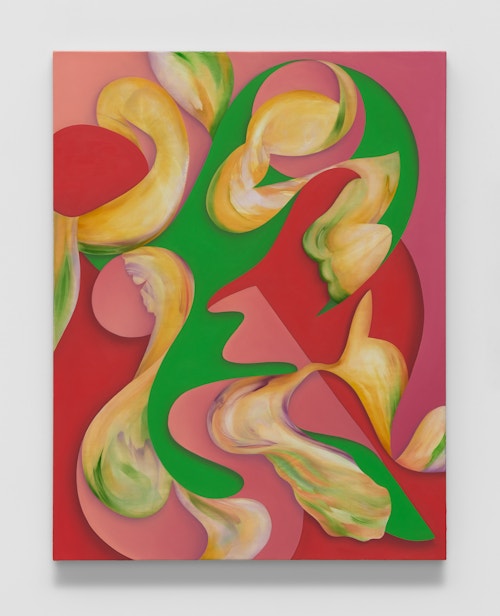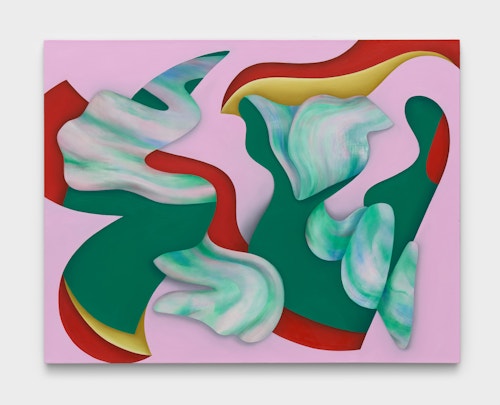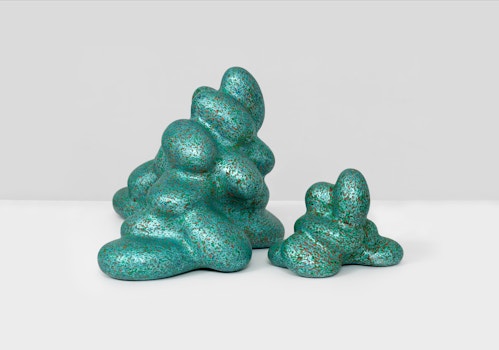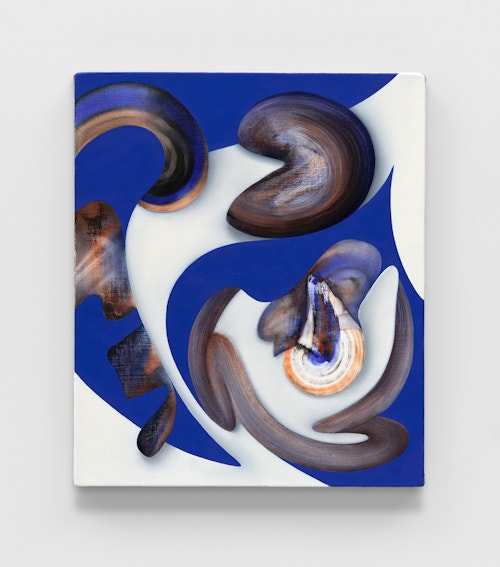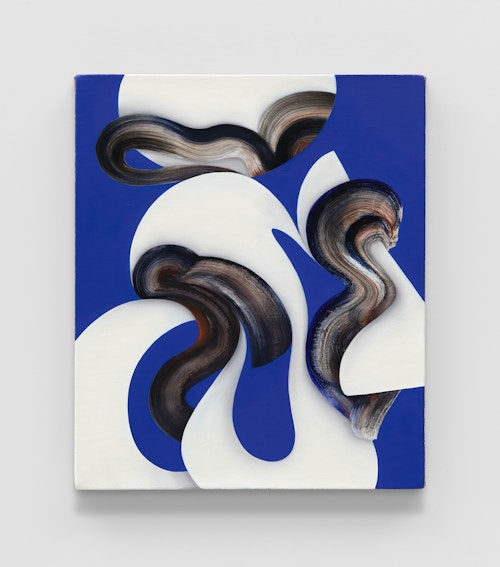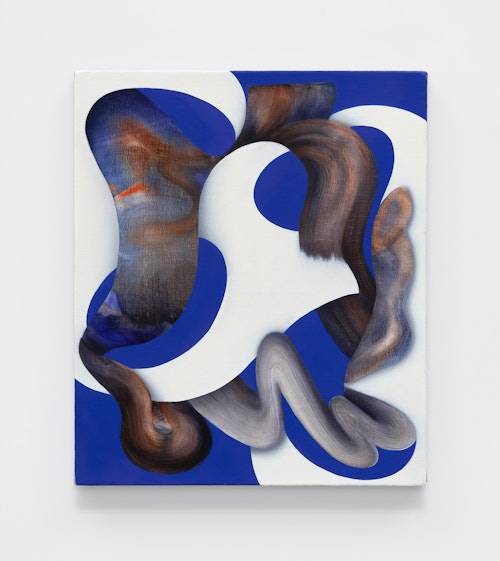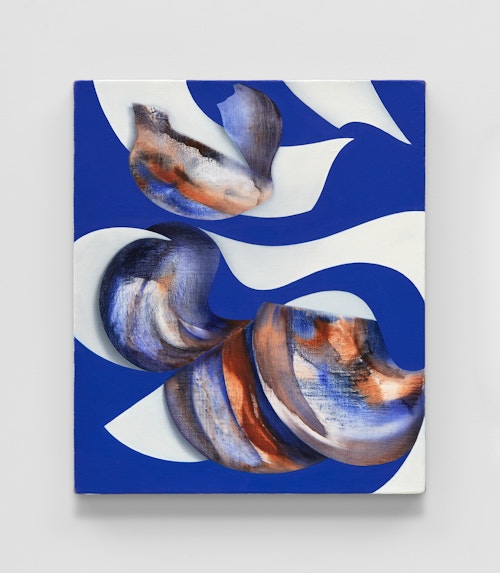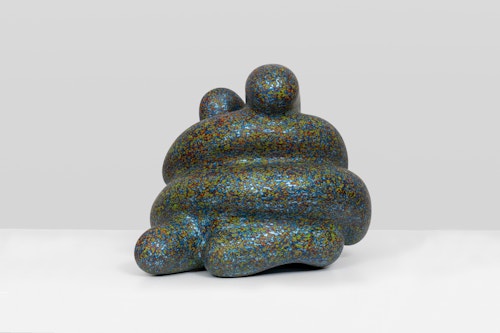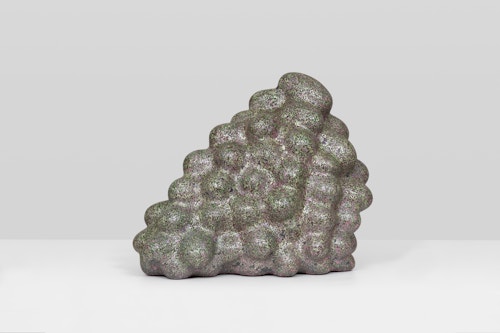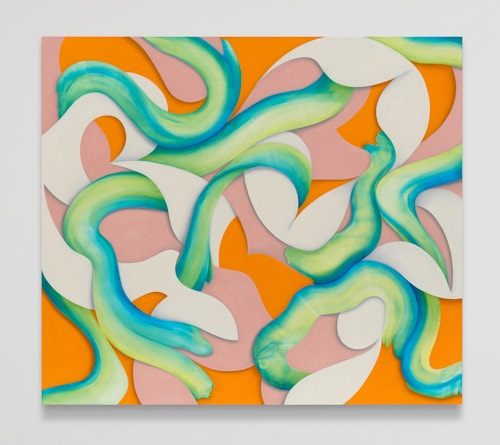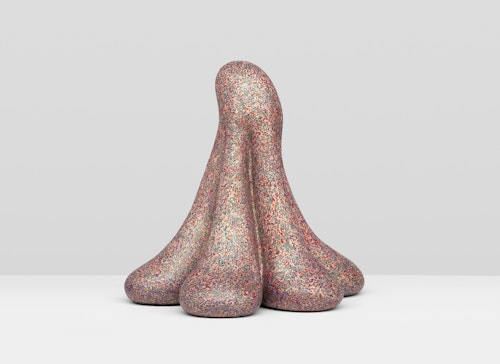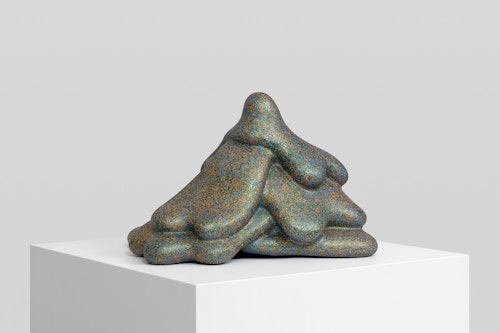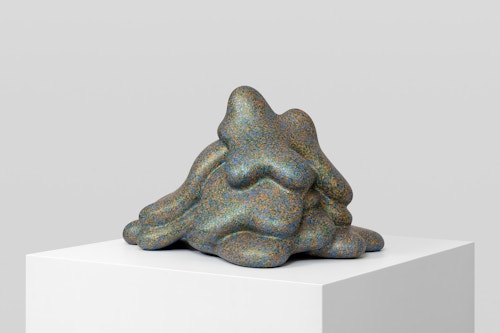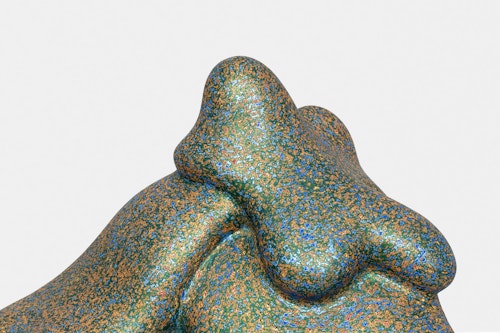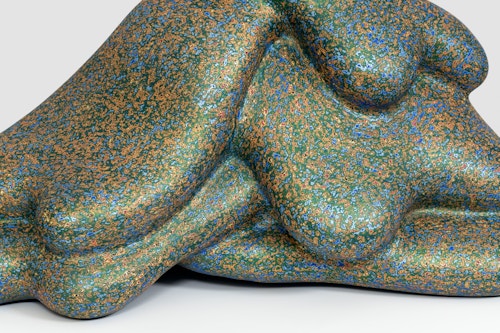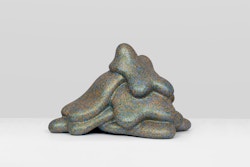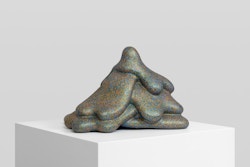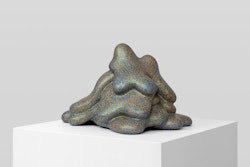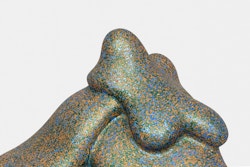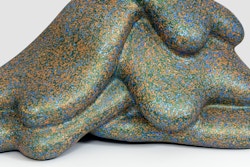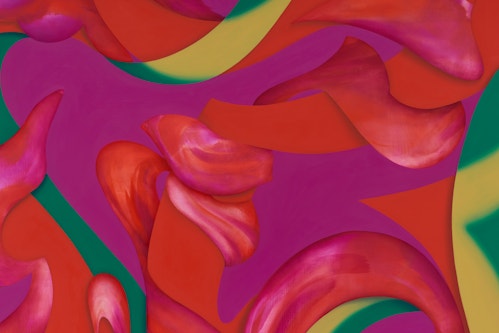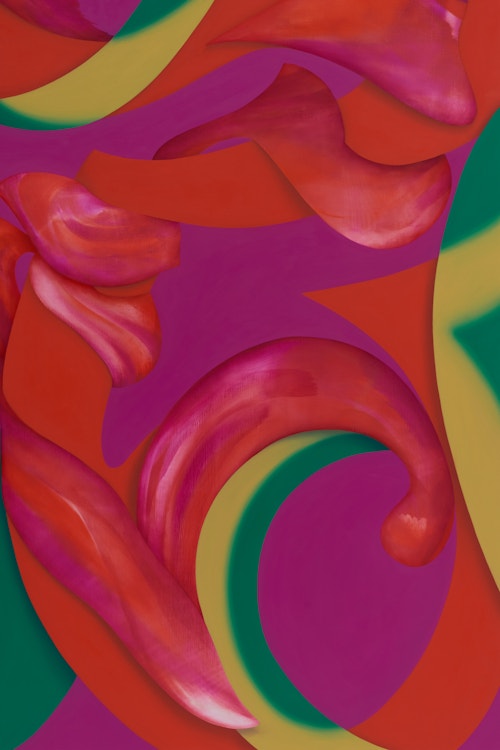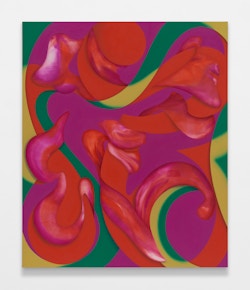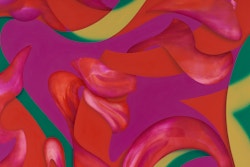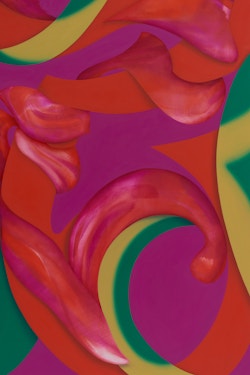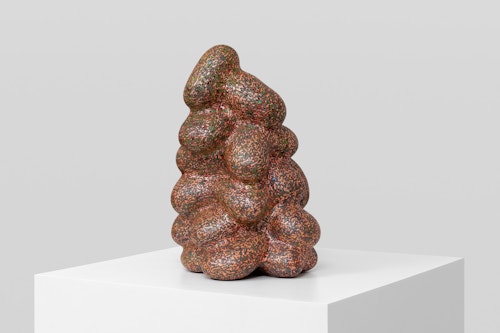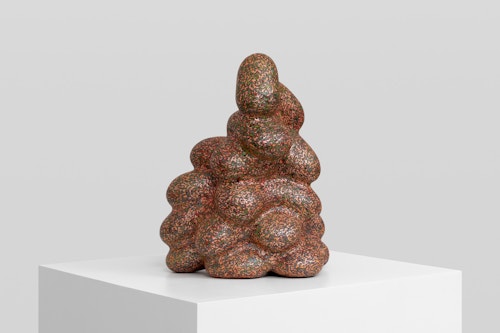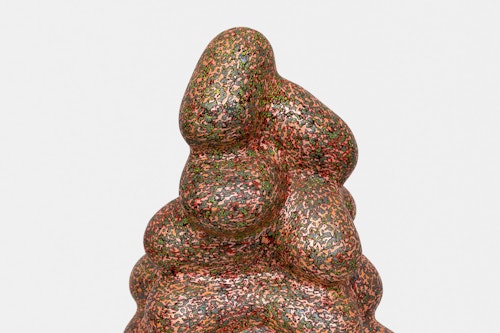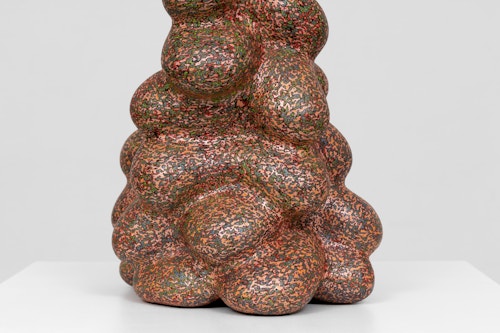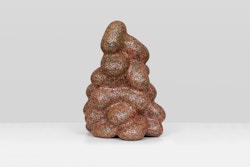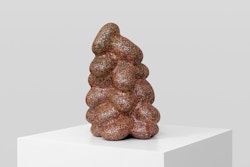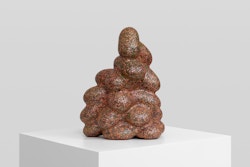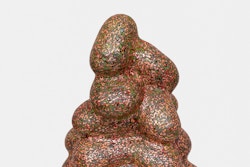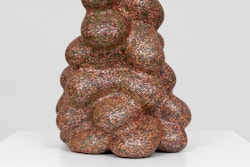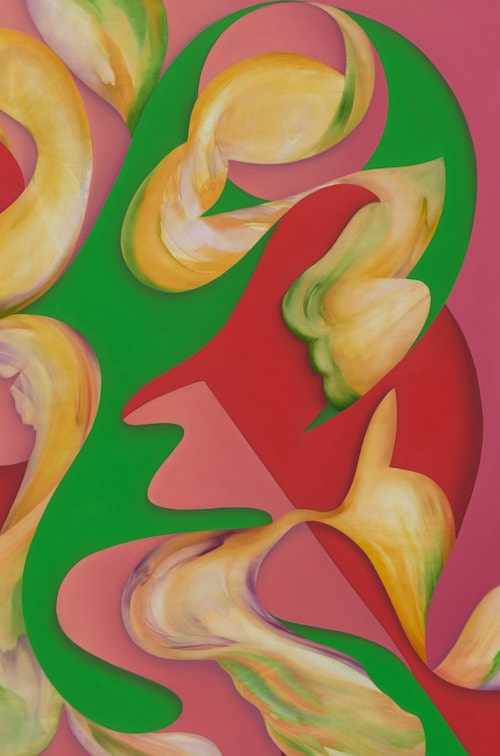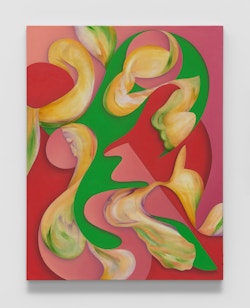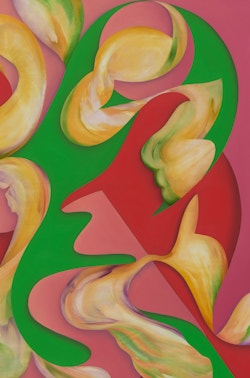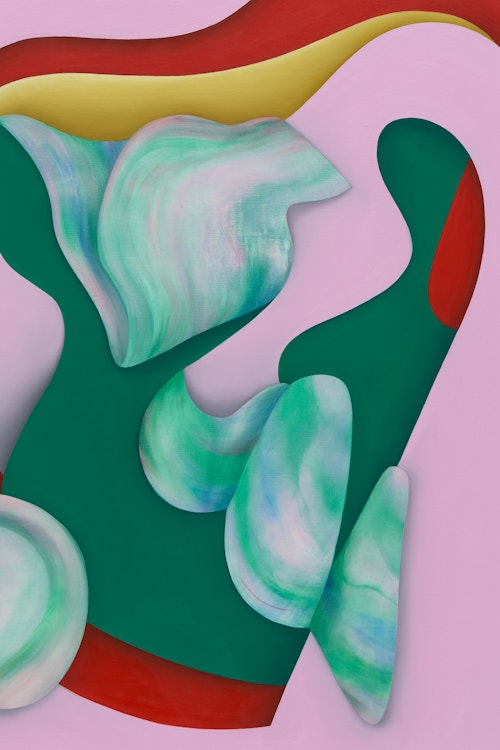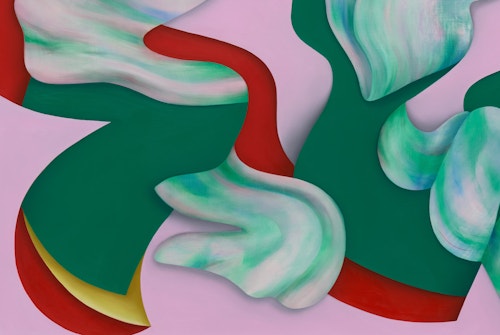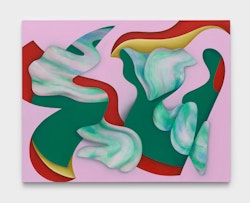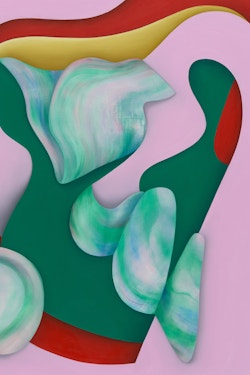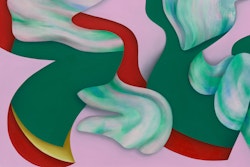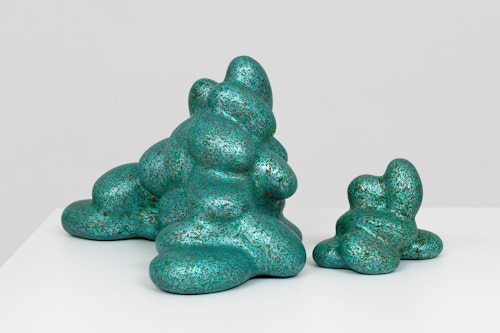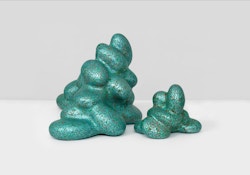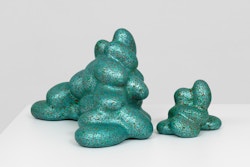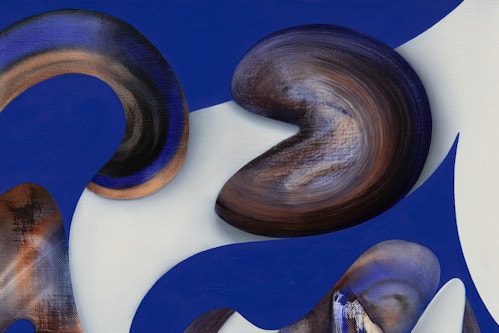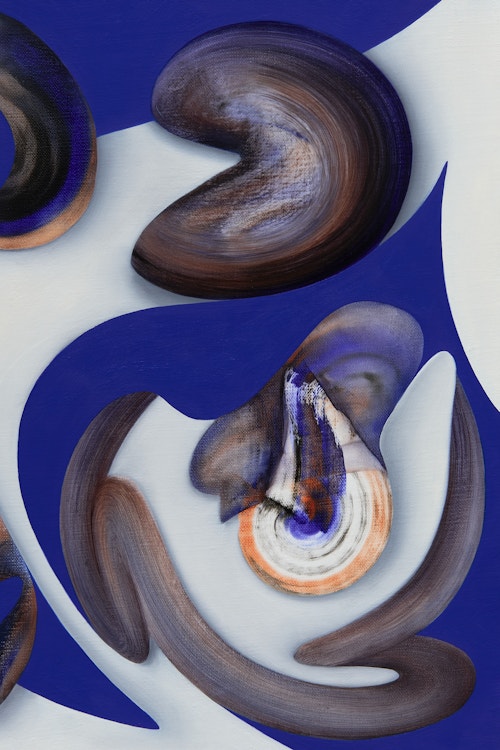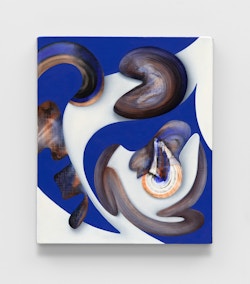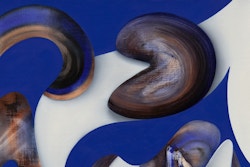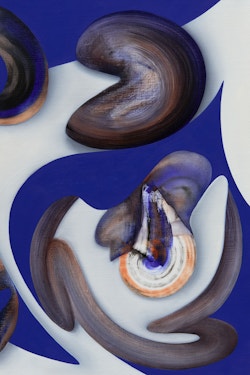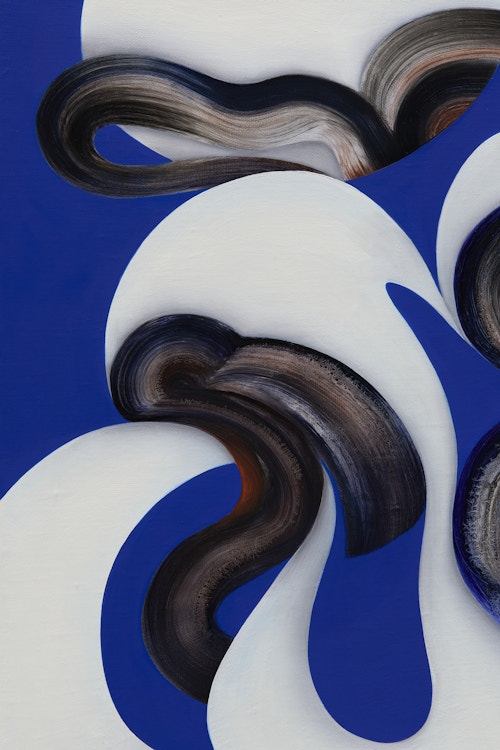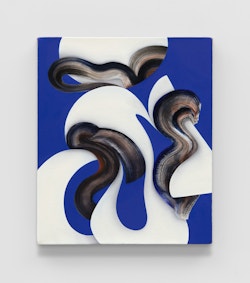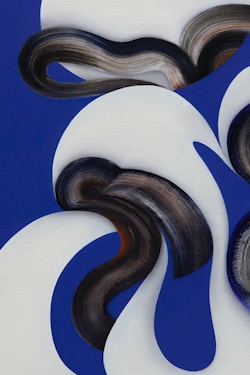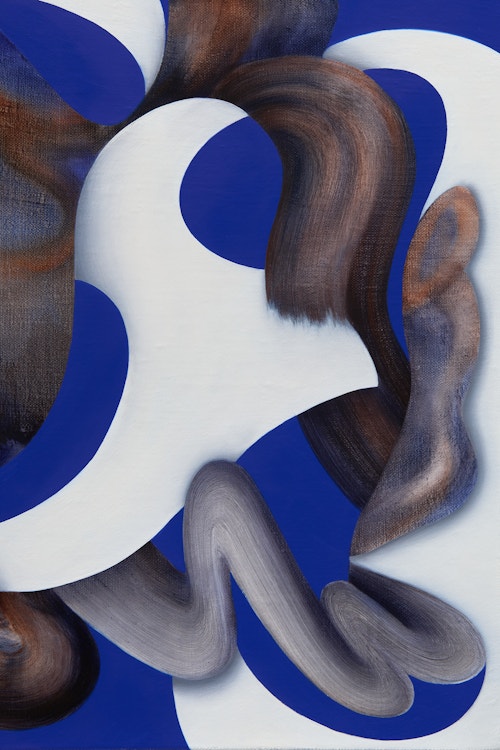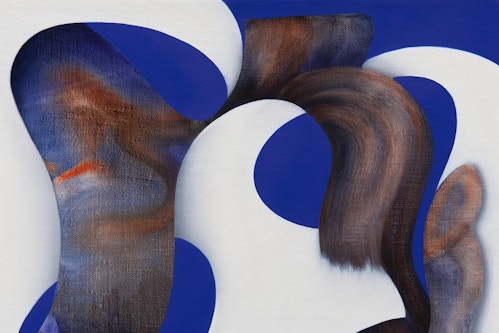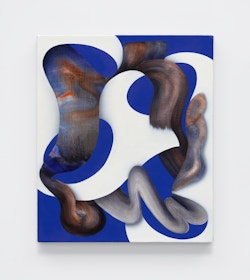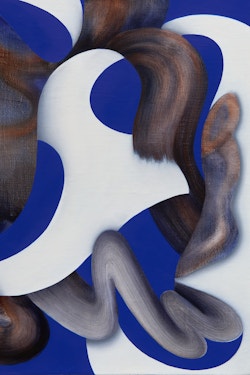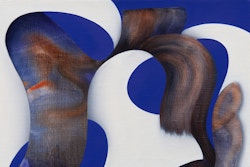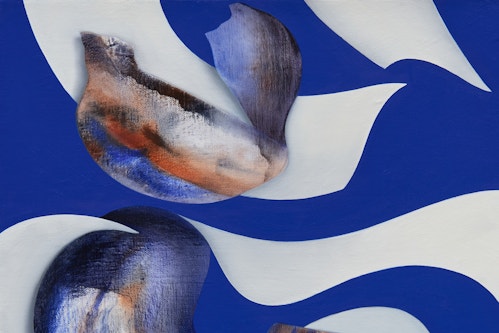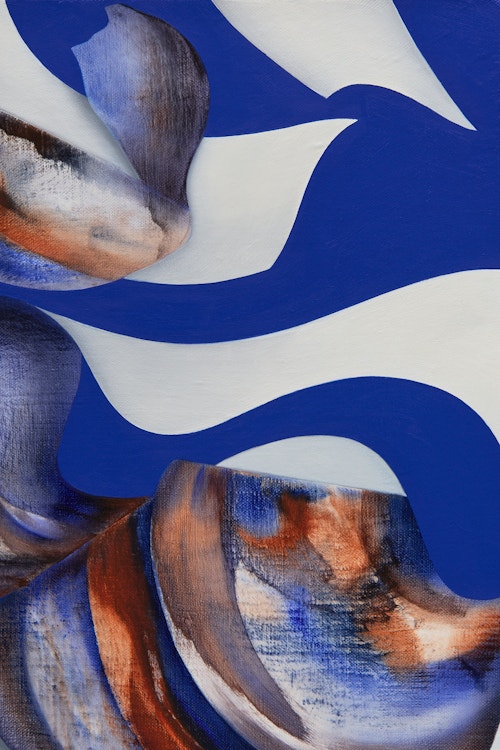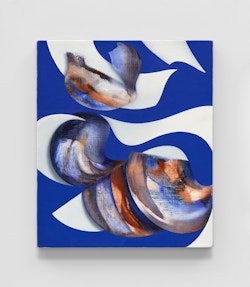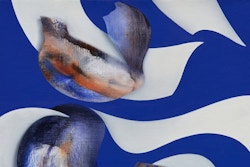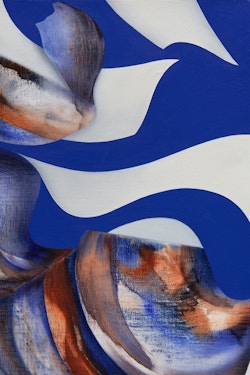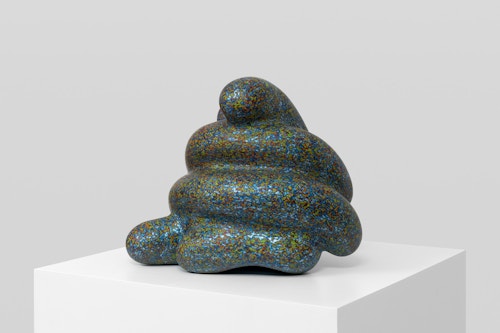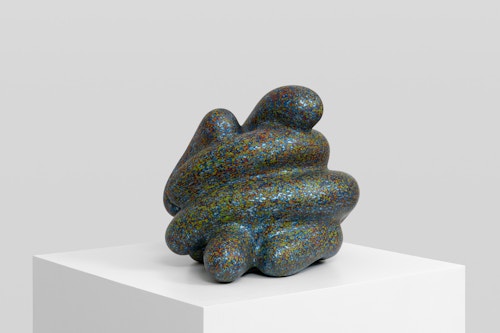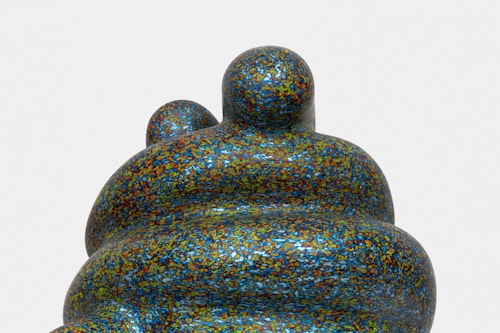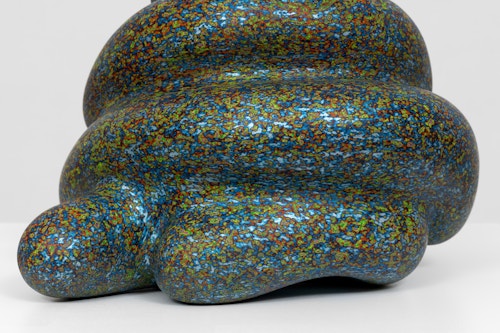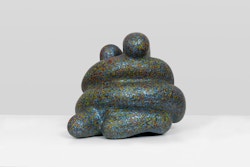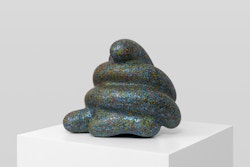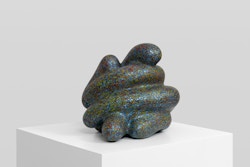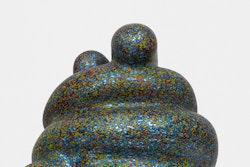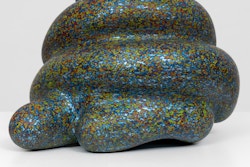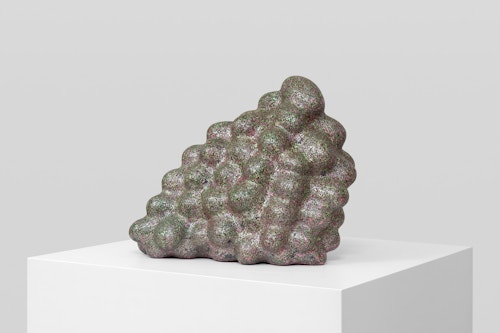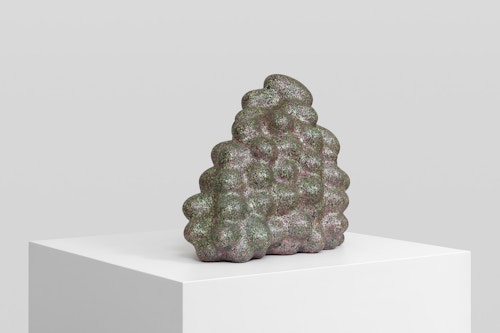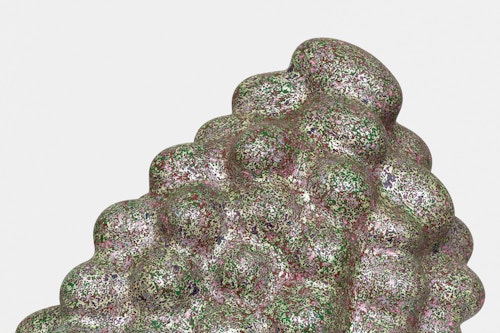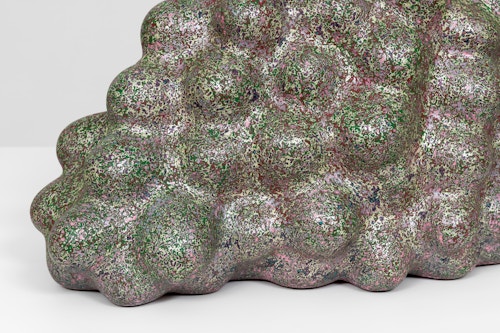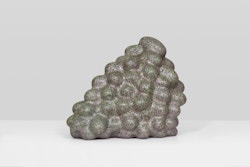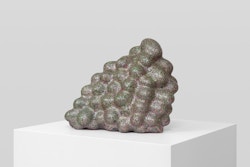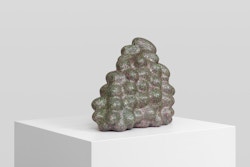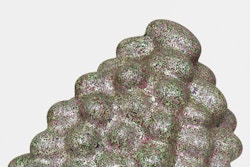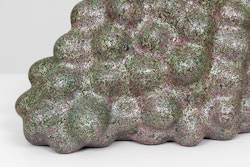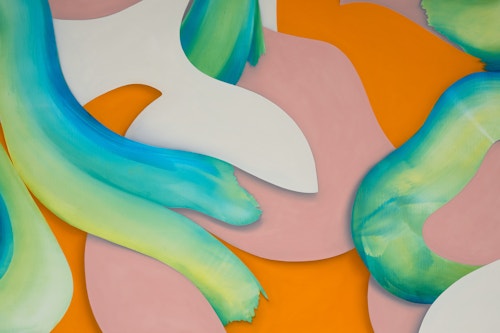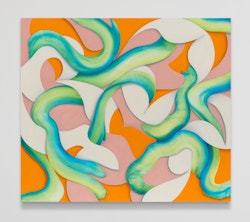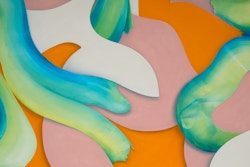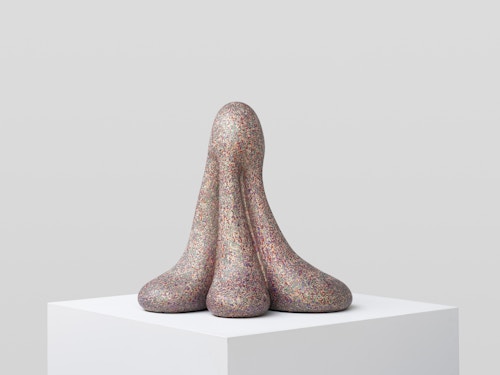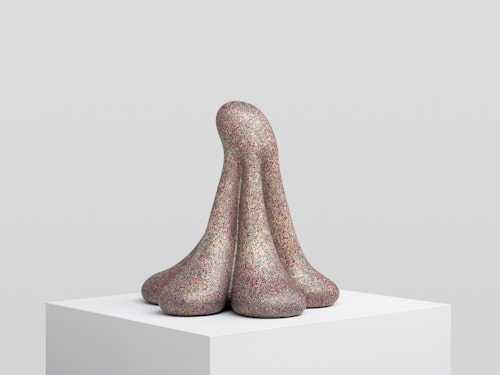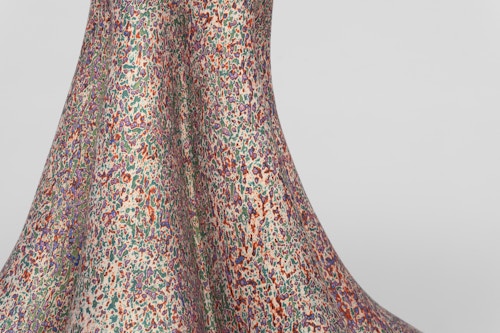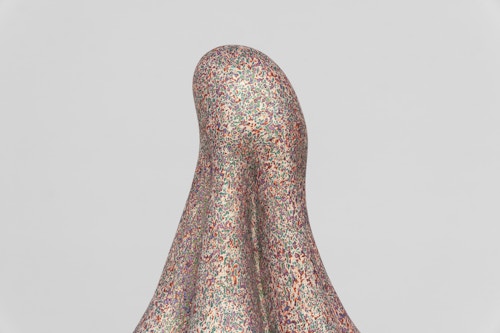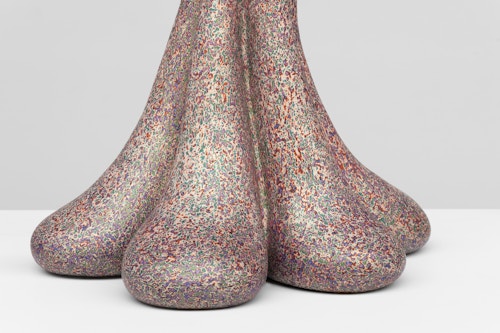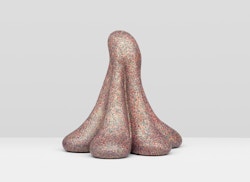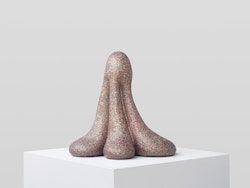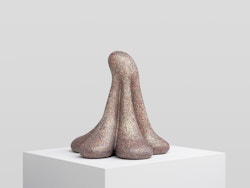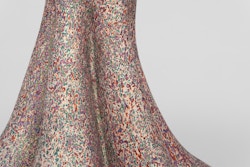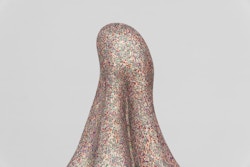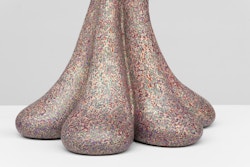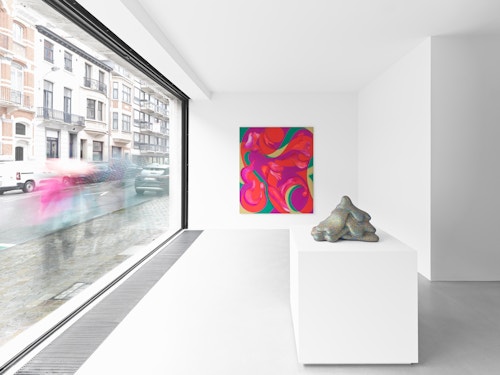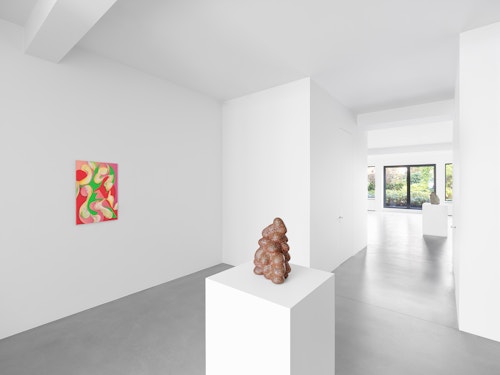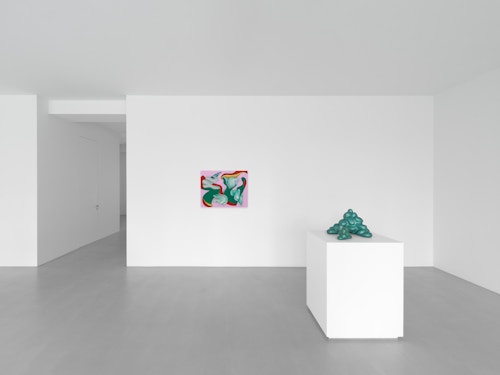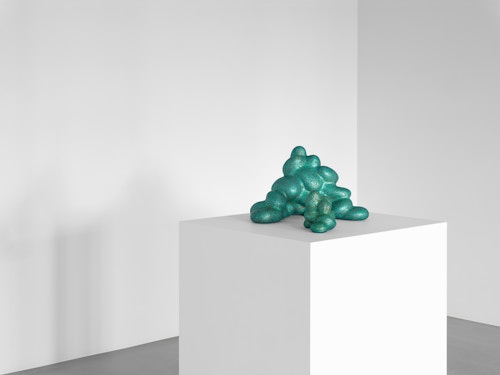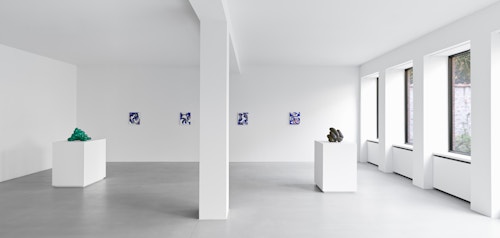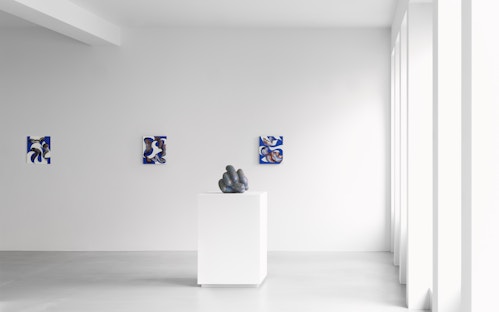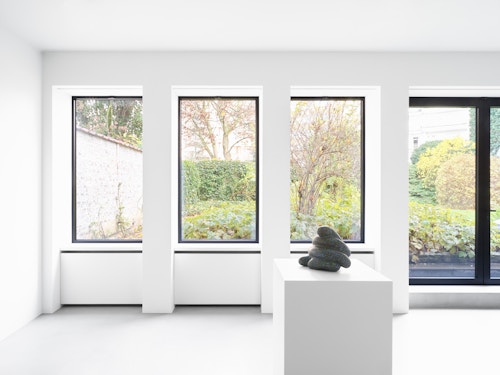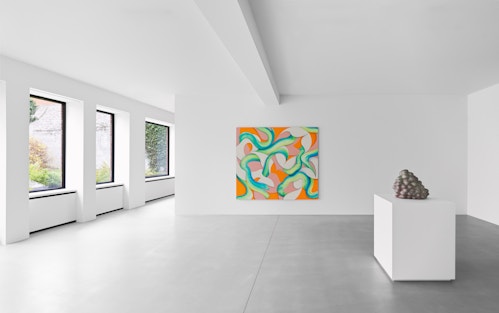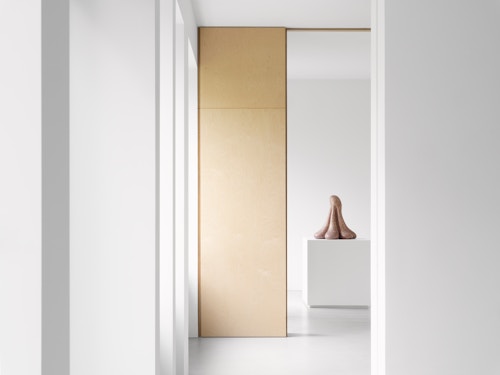
Lesley Vance, Ken Price Fired and painted
Fired and painted brings together a recent series of paintings by Lesley Vance (b. 1977) and a group of ceramic sculptures by Ken Price (1935-2012). Two American artists of different generations and disciplines but whose abstract works share a number of affinities. Taking scale as a departure point, Vance has pushed her practice in new directions for this exhibition, her fifth with the gallery. The presentation not only includes her largest canvas to date but also some of her smallest, together with an ensemble of medium-format paintings. Through the interplay of scales and volumes, Fired and painted suggests resonances between the different art forms and opens up a dialogue on the themes of colour, surface, form and spatiality.
Lesley Vance has long been fascinated by the relationship between ceramics and
painting, both of which involve the application of fluid mediums onto neutral
supports. Moreover, she also cites Ken Price as a key source of inspiration. A
relentless innovator in the field of ceramic sculpture, Price is best known for his
biomorphic forms that he finished, from the 1980s onwards, with acrylic paint
instead of traditional glazes. Typically applying up to seventy layers of pigment
and multiple colours to each work, he sanded these down to create striking,
mottled effects. Colour is one of the key themes that links these two artists:
both artists use its material qualities and allow it to determine their work in
a physical and expressive sense.
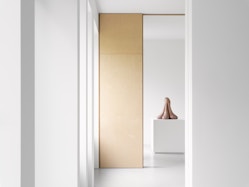
Price and Vance also focus on reduction as a means of creation. Vance, who is interested in synergy and dissonance, often restricts her palette to a handful of shades in order to explore their full, tonal potential. In terms of composition, too, the act of removal is as important as the constructive process. She likens it to a form of ‘reverse collage’. Price, on the other hand, condensed a broad spectrum of colours into hues that read, from a distance, as a uniform colour value. He said: “Colour has been an integral part of most of the work I’ve made, but there’s not much to say about it. Colour is complete in itself. It doesn’t need any support from art, representation, language, or anything else. It’s hard to control... Colour conveys emotion, but you can’t really control that either.” Vance’s paintings, in which colour functions autonomously on both a structural and atmospheric level, echo this sentiment.
Both of the artists’ oeuvres revolve around movement. Price’s sculptures have a fluid, molten-like quality—as if a thick, viscous liquid has been stopped mid-pour. Vance’s paintings are dynamic compositions in which shapes and colours are indivisibly and inexplicably linked: they advance and recede, emerge and disappear, separate and converge. Price’s and Vance’s works are neither static nor lifeless. Both convey the idea of arrested movement in their art, as though motion has been temporarily suspended rather than permanently ended. And the roots of their practices, while abstract, ultimately lie in reality: Price found inspiration in the strange alien-like rock forms and ancient pottery of New Mexico, while an arrangement of objects, a glazed ceramic surface, or even another painting can all be catalysts for the gestures and shapes that determine the course of Vance’s paintings.
Price developed a highly personal approach to process and materials, and the same is true of Vance. His sculptures are flawlessly finished, inscrutable and luminous, and reveal nothing of the methodology behind their curious and otherworldly presence. The same sensibility is also found in Vance’s canvases, the surfaces of which are just as radiant and reticent. A mysterious quality surrounds both types of work: it is impossible to imagine the interior structure of a Price sculpture, just as the viewer will search in vain for a structural hierarchy in Vance’s paintings.
Finish is a crucial component of Price’s sculptures, which he described as “rounded forms with active surfaces.” Just as one might say of Vance’s paintings, in reverse, that they are “flat surfaces with active forms.” It is precisely this interaction—between colour, surface, form and spatiality—that links their work across disciplines and generations.
Lesley Vance (b. 1977, Milwaukee, WI, USA) lives and works in Los Angeles. Always circled whirling, her first solo institutional exhibition was recently organised by the Columbus Museum of Art, Columbus, OH, USA (2023). Vance’s work is held in numerous public collections: San Francisco Museum of Modern Art, San Francisco; Metropolitan Museum of Art, New York; Dallas Museum of Art, Dallas; Milwaukee Art Museum, Milwaukee; Museum of Contemporary Art, Los Angeles; The Museum of Modern Art, New York; Los Angeles County Museum, Los Angeles; Walker Art Center, Minneapolis; and The Whitney Museum of American Art, New York, among others. Her work is also currently included in 50 Paintings at Milwaukee Art Museum, Milwaukee.
Ken Price (1935-2012) participated in the Whitney Biennial in 1979 and 1981. His first retrospective took place in 1992 at the Walker Art Center, Minneapolis. A major travelling retrospective was organised by the Los Angeles County Museum of Art (2012-2013) and designed by his friend Frank Gehry. His works are included in important public and private collections around the world including the Metropolitan Museum of Art, New York; Museum of Modern Art, New York; San Francisco Museum of Modern Art, San Francisco; Whitney Museum of American Art, New York; Victoria and Albert Museum, London; Walker Arts Center, Minneapolis; and Stedelijk Museum, Amsterdam.
